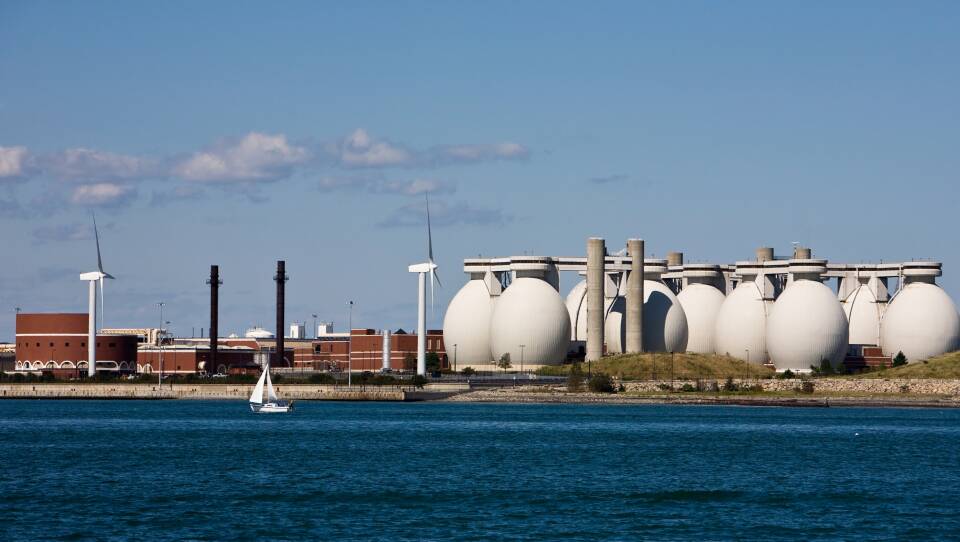Newsha Ghaeli wants to turn the sewer system into a public health observatory.
“Urine and stool contain a lot of information about human health and well-being,” said Ghaeli, a former MIT researcher who co-founded Somerville startup Biobot Analytics with Mariana Matus in 2017.
Biobot scours wastewater for the stuff we excrete, like bacteria or drug byproducts.
“Every time we flush the toilet we’re actually flushing this valuable information away and it’s aggregating in our city sewers,” said Ghaeli.
Previously, Biobot has analyzed sewage to map the severity of the opioid epidemic. This spring the company pivoted toward a new challenge — COVID-19.
Biobot is testing for the virus in raw waste from dozens of U.S. cities, hoping to track the wax and wane of the pandemic in each location. The approach — called wastewater epidemiology — is relatively new and still developing. But officials say Biobot’s sewage sampling could help them craft guidelines for public health protections like social distancing.
What our waste reveals
In mid-March, Biobot started working with raw sewage samples from Deer Island, a treatment plant in Boston that receives wastewater from a broad swath of Eastern Massachusetts representing 2.3 million residents. Using genetic techniques, the company found a way to measure the concentration of coronavirus particles — likely excreted in infected individual's stool — in the sewage. Biobot detailed their methods in an online study that awaits peer review.
Biobot estimated that anywhere from 0.1% to 5% of the population could be infected with COVID-19. That’s a wide range, in part because it’s uncertain just how many virus particles an infected person excretes. But even the low end of the range is several times higher than the state’s officially reported caseload of 0.026% at the time of the study.
For the study, Biobot collaborated with researchers from MIT, Harvard, and Brigham and Women’s Hospital.
Biobot plans to repeat their COVID-19 testing weekly—even if they can’t put an exact number on the infection rate, Ghaeli said they can track “how the outbreak is changing from week to week…is it trending up or down?”
Since Biobot’s pilot study in Boston, more than 100 municipalities across the U.S. have asked the company to test their sewage for COVID-19. That demand surprised Ghaeli.
“It’s been incredible,” said Ghaeli. “About a week and a half into the campaign we hit capacity.”
Matus said Biobot is searching for partners — labs with unused capacity — to help them expand testing beyond the 100 communities. Biobot is not charging for the testing.
Sewage monitoring could aid decision making
Officials in Massachusetts including Gov. Charlie Baker are keeping tabs on Biobot’s work, which could inform public health decisions. Due to a shortage of in-person testing supplies, the exact extent of COVID’s spread within the state is unknown.
Sewage sampling could fill that information gap if Biobot can accurately estimate how the prevalence of COVID-19 changes over time.
If so, “it helps us determine things like how long we should be implementing some initiatives that we are doing around public health — some of the initiatives around social distancing,” said Stacey Kokaram, director of the Office of Public Health Preparedness at the Boston Public Health Commission.
For now, Kokarum is taking a wait-and-see approach.
“A lot of this is preliminary,” said Kokaram, adding that Biobot’s work could complement — but not replace — the in-person testing the city is conducting. “It provides an additional layer of public health surveillance.”
A developing tool
Wastewater epidemiology is relatively new, and some experts caution there are kinks yet to work out. For one, it’s hard to pinpoint the source of a virus in wastewater, according to Kartik Chandran, an environmental engineer at Columbia University.
Biobot’s estimates of COVID-19 prevalence assume that the viral particles in wastewater come from the stool of infected people.
But Chandran noted that “what comes out of a sewage pipe is not just human waste.”
Wastewater is a medley — virus particles could get washed down the drain from contaminated surfaces or clothing, which could skew the data, said Chandran.
These data details also raise a broader question about privacy — who owns the information embedded in your poop? Legally, there’s no clear answer. Privacy experts say that, in general, people are entitled to privacy while inside their home, but could be subject to monitoring while out in public spaces.
Governments and companies like Biobot have extended this principle to your flushables.
“Once it’s flowing through infrastructure, it’s effectively in public space,” said Ben Green, a doctoral candidate at Harvard University who researches the social impacts of government algorithms and data collection.
To assuage privacy concerns, Ghaeli said Biobot’s policy is to not collect waste from individuals or small groups. Rather, the company only gathers sewage from pipes that gather and intermingle sewage from more than 4,000 people. That way, Ghaeli said the data remains anonymous.
Wastewater epidemiology has been successful in the past, especially in determining the presence or absence of a disease, rather than its exact prevalence. In 2013, sewage surveillance in Israel revealed an unexpected polio outbreak. The government issued mandatory vaccines to all children younger than ten, and not a single case of paralysis resulted. More recently, researchers in the Netherlands this March detected the new coronavirus in wastewater in Amersfoort one day before the city’s first confirmed case of COVID-19.
As Biobot works to expand their sewage surveillance for COVID-19, other researchers in the U.S. and internationally are doing the same. While wastewater epidemiology isn’t a perfect substitute for widespread, in-person testing, cities hope it can fill some information gaps in the short term. And when we finally get a COVID-19 vaccine, our sewage could reveal whether we’ve vanquished the disease for good.
Daniel Ackerman is a freelance environmental reporter in Boston.





